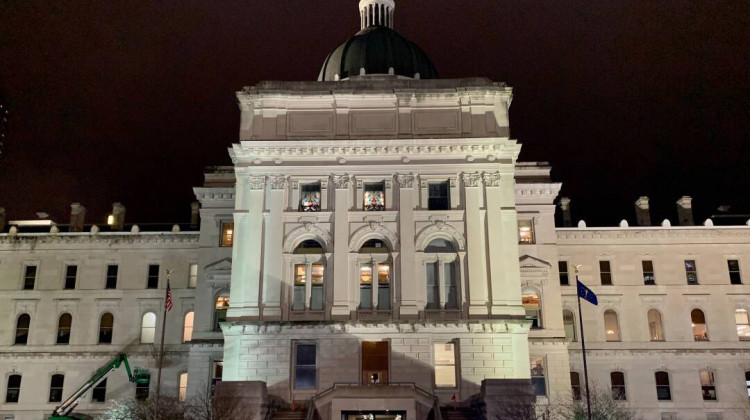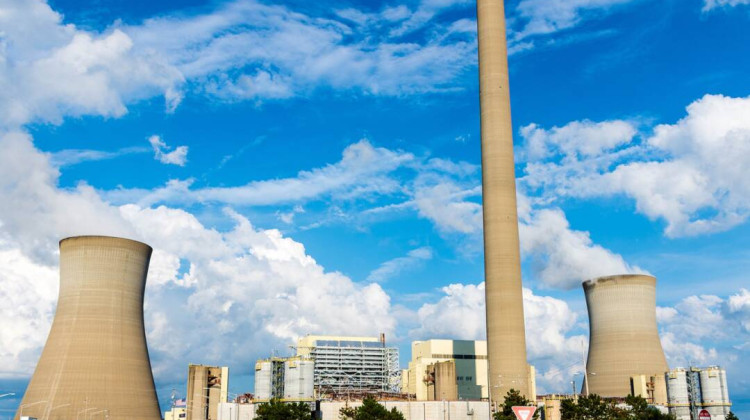The country’s newest national park isn’t like many of the others — it’s surrounded by some of the largest industrial companies in the U.S. While Indiana Dunes’ new designation has drawn national attention, so have recent industrial spills in nearby Lake Michigan waterways.
But will the park’s designation pressure industrial companies to clean up their act?
Pollution Puts The Dunes And Visitors At Risk
Since Indiana Dunes became a national park in February, its visitor center has seen more people than it has in any of the past eight years. But just six months later, excess cyanide and ammonia leaked from a nearby steel facility owned by ArcelorMittal, killing about 3,000 fish and forcing one park beach to close temporarily.
After that, some tourists weren’t sure the Dunes were safe. That affected businesses in the area, like Spring House Inn — a small, woodsy retreat at the edge of the park.
“We had a lot of cancellations on reservations and we had a lot of people who were calling and inquiring about if everything was affected by the chemical spill here at the dunes," says Cara Howard, who manages the front desk.
Howard says the Inn expects to book nearly all of its rooms on the weekends, but after the spill, it was only about half full.
“Prior to them being a national park if it was — this chemical spill happened, there wouldn't have been as much attention on it because there's a lot of steel mills in this area. So these things do happen,” she says.
But it’s not just tourism at risk when these spills occur — the Dunes have some of the most diverse types of plants and animals in the U.S., including threatened and endangered species.
Dan Plath is the chief of resource management for Indiana Dunes National Park. He says the Dunes are one of the few places where you can find a desert plant like the prickly pear cactus right next to a cold-hardy plant like the arctic bearberry.
“That's one of the reasons I get so excited about working for the park you see things like this that are really not found anywhere else in the world,” Plath says.
Natalie Johnson is the executive director of the environmental group Save the Dunes. She says when the Port of Indiana was founded in the 1960s, it was supposed to show how you could have a sensitive ecosystem like the dunes alongside pollution-free industry.
“And are we pollution free? The answer is absolutely not,” Johnson says.
The 100-Year-Old Battle Over The Dunes
The history of Indiana Dunes has been closely tied with industry since the early 1900s. That's when glass manufacturers the Ball Brothers of Muncie and the Pittsburgh Plate Glass Company of Kokomo tore down the largest sand dune along the national lakeshore, a 200-foot dune called the Hoosier Slide.
Residents and environmental advocates have been petitioning the Indiana Dunes to become a national park since 1916. But it was only when a group of politicians and businessmen wanted to create an economic port, the Port of Indiana, that dunes advocates got their wish.
President John F. Kennedy created a program that would allow the Port of Indiana to be constructed while also establishing Indiana Dunes as a national lakeshore. In 1966, legislation made that compromise a reality.
Northwest Indiana Needs Industry, But Is It Doing Its Part To Protect The Dunes?
Johnson says industrial companies are very important to the region's economy.
"We need that industry and we need those jobs. And the people who work there are the ones who are often here playing in the dunes and enjoying this beautiful space,” she says.
Some say industrial companies in the Great Lakes basin are already working hard to be good stewards of the environment. Kay Nelson is the environmental affairs director for the Northwest Indiana Forum — a regional economic development organization.
“The discharge permits for any and all entities surrounding all five of the Great Lakes have much more stringent standards for their municipal and industrial discharge facilities, then say the rest of the state of Indiana that does not discharge into Lake Michigan,” she says.
But environmentalists say industry isn’t doing enough. According to the Environmental Protection Agency, U.S. Steel and ArcelorMittal are among the top five companies for most toxic releases in Indiana since 2007. And per square mile, Indiana has the third highest toxic releases in the country.
A parks advocacy group, the National Parks Conservation Association, says industrial air pollution — along with emissions from nearby Chicago — are likely having an effect on the plants and animals at the Dunes.
“Visitors to national parks expect a certain experience you expect clean air, you expect clean water, you expect natural vistas,” says Colin Deverell, NPCA’s Midwest program manager.
Deverell says there should be consequences for companies that pollute the park. Back when Indiana Dunes was just known as a national lakeshore, U.S. Steel spilled about 300 pounds of the cancer-causing chemical hexavalent chromium into the Burns Waterway which feeds into Lake Michigan.
The EPA still hasn’t finalized a consent decree — which means the company has yet to pay fines for harm caused by the spill.
“What's really needed is that added layer of vigilance, vigilance from people who come to national parks to say we expect that clean air we expect that clean water. So businesses, state and federal regulators do your jobs and protect this place,” Deverell says.
Two environmental groups say they’ll sue ArcelorMittal if state and federal regulators don’t hold the company accountable for its environmental violations.
We could not get an interview with northwest Indiana industrial companies U.S. Steel, BP, or ArcelorMittal. Some of the companies pointed to funding they’ve given to area conservation programs.
Contact Rebecca at rthiele@iu.edu or follow her on Twitter at @beckythiele.
Indiana Environmental reporting is supported by the Environmental Resilience Institute, an Indiana University Grand Challenge project developing Indiana-specific projections and informed responses to problems of environmental change.
 DONATE
DONATE










 Support WFYI. We can't do it without you.
Support WFYI. We can't do it without you.